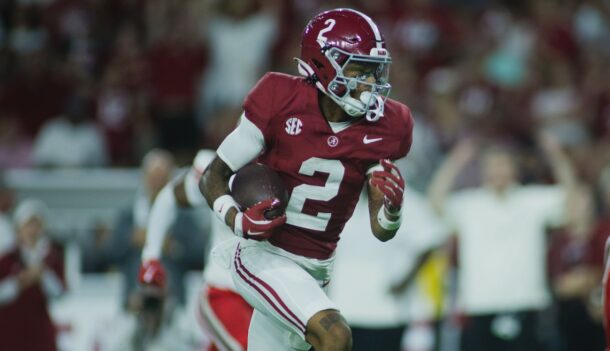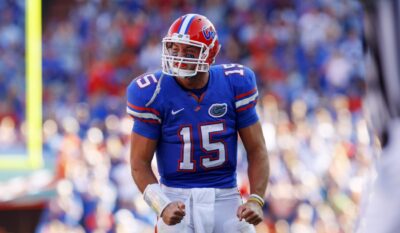Former South Carolina running back Marcus Lattimore recently announced his retirement from the NFL. “Retirement” is a term of art here, given Lattimore never appeared in a NFL regular season game.
The San Francisco 49ers selected Lattimore in the fourth round of the 2013 NFL Draft and offered him a four-year contract with a signing bonus of over $300,000. But Lattimore never recovered from the serious knee injuries he suffered in back-to-back years while playing for the Gamecocks.
Lattimore may not leave his aborted NFL career empty-handed.
In addition to the signing bonus, he’s filed a claim on a $1.7 million disability insurance policy. This policy, purchased by Lattimore while a junior at South Carolina, reportedly allows him to collect if he fails to appear in at least four NFL games. The NCAA and private insurers make such policies available to football, basketball, baseball and ice hockey players to hedge against the risk of a career-ending injury while still in college.
The NCAA-backed policy is offered to any college football player projected to go in at least the first three rounds of the next NFL Draft. The policy may cover a period of up to two years, and offers a one-time payout of up to $5 million in the event of “permanent total disability,” meaning the player is “unable to engage in sporting activity at the professional level.”
Such policies are expensive. Lattimore reportedly paid upwards of $15,000 in premiums for his $1.7 million in coverage. Players can borrow the money to pay for the premiums. The loan must then be repaid after the player signs a professional contract or receives benefits under the policy.
If Lattimore does collect on his policy, he may be just the second former SEC player to ever do so. Kevin Fixler, writing for The Atlantic last year, said former Florida defensive tackle Ed Chester was the first college player “publicly known to have benefited” from this type of insurance policy. Chester reportedly collected $1 million (on a policy costing $8,000) after suffering a knee injury during his senior season.
Like Chester, Lattimore is believed to have purchased his policy from a private company not affiliated with the NCAA. Neither the NCAA nor its members publicly discuss who has purchased insurance or who may be collecting benefits.
Is Lattimore a Tragic Victim?
In the aftermath of Lattimore’s retirement announcement, there has been predictable media chatter over the fact Lattimore suffered his apparently career-ending injuries while playing for South Carolina.
Lattimore’s tale was described as “tragic” by one commentator, who blamed the unfairness of the NFL’s rule requiring a player to be out of high school for three years before entering the draft.
Another pundit blamed the Old Ball Coach, claiming Steve Spurrier should have given fewer carries to Lattimore in the hopes of preserving “part of him for the short career he might have in the NFL.”
These arguments are convincing only if you ignore context. The truth is, not only did Marcus Lattimore pursue an inherently risky occupation in professional football, he chose a specialty (running back) that is known for its high attrition rate and short career span.
Even if Lattimore had been able to enter the NFL Draft after his sophomore year, any number of events might still have derailed his pro career before it began. There is no such thing as a “can’t-miss” prospect in the NFL.
Consider the first two running backs taken in the 2011 NFL Draft, former Alabama Heisman Trophy winner Mark Ingram and Virginia Tech’s Ryan Williams. Ingram has had a solid career with the New Orleans Saints, just recently posting back-to-back 100-yard rushing games. Williams, in contrast, suffered a serious injury during his first pre-season with the Arizona Cardinals and never appeared in a game. He is currently on the Dallas Cowboys practice squad.
Even if Lattimore had been allowed into the NFL early—or, for that matter, even if he had not been injured twice while at South Carolina—there is still no way to know whether he would have ended up like Ingram or Williams. There are simply too many variables to consider.
NFL teams are hardly infallible when it comes to assessing personnel. As USA Today noted in a 2013 story on Williams, the Cardinals had “drafted 20 running backs in the past 25 years, but only three of them … had 1,000 yard seasons in Arizona.”
Given the high failure rate for NFL running backs, Lattimore may actually make out better than most if his insurance policy pays off. Most 23-year-olds do not collect a seven-figure sum after failing to hold down their first job out of college.
This is not to minimize the serious physical hardship Lattimore has had to overcome. Rather, it is a recognition that his situation is relatively unique.
The vast majority of college football players never come close to a shot at the NFL. They won’t even qualify for the type of insurance policy Lattimore obtained.
At the end of the day, even without playing a single NFL down, Lattimore will still be better off than 99.9% of the people who played college football—hardly a tragic outcome.
S.M. Oliva is a writer based in Charlottesville, Virginia.







